Royal Game Of Ur – One Of The Oldest Game Boards Discovered
AncientPages.com - Question: What was the Royal Game Of Ur?
Answer: In the ancient world, board games were as popular as they are today. Board games were very common in ancient Egypt, Mesopotamia and other parts of the world.
The Royal Game of Ur is a board game made between 2600 and 2400 BC. It means the game is at least 4,400 years old!
It was discovered in Mesopotamia (modern Iraq) in the 1920s when the British archaeologist Leonard Woolley was digging into the ruins of a long-buried royal city. Among many amazing treasures, he found several games and the Royal Game Of Ur is one of them.
The board's wood has decayed, but the hard, decorative pattern of shell, red limestone and lapis lazuli (a blueish mineral) has survived. The counters were made from shale and shell.
See also: Ancient Egyptian Toys And Games In Focus
The Ur-style Twenty Squares game board was also known in Egypt as Asseb, and has been found in Pharaoh Tutankhamen's tomb, among other places. Discovery of a tablet partially describing the game play has allowed the game to be played again after over 2000 years, although reconstructions of the detailed rules have differed widely.
The Royal Game of Ur was played with two sets, one black and one white, of seven markers and three tetrahedral dice. After around 1000 BC, the layout of the twenty squares was altered to make the end course for the markers a straight line.
The rules of the game as it was played in Mesopotamia are not completely known but there have been a number of reconstructions of game play, based on a cuneiform tablet of Babylonian origin dating from 177–176 BC by the scribe Itti-Marduk-Balāṭu. It is universally agreed that the Royal Game of Ur, like Senet, is a race game.
AncientPages.com
Expand for referencesMore From Ancient Pages
-
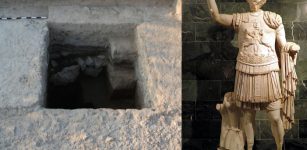 Unfinished Roman Aqueduct Discovered In The Hellenistic Royal City Of Artashat-Artaxata In Ancient Armenia
Archaeology | Nov 16, 2021
Unfinished Roman Aqueduct Discovered In The Hellenistic Royal City Of Artashat-Artaxata In Ancient Armenia
Archaeology | Nov 16, 2021 -
 Rare Magic Mirror In Cincinnati Museum Has A Secret Hiding In Plain Sight
Artifacts | Jul 19, 2022
Rare Magic Mirror In Cincinnati Museum Has A Secret Hiding In Plain Sight
Artifacts | Jul 19, 2022 -
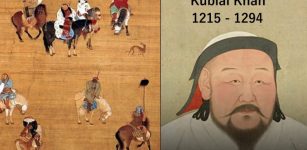 Emperor Kublai Khan: One Of The Most Powerful People In Human History
Featured Stories | May 23, 2017
Emperor Kublai Khan: One Of The Most Powerful People In Human History
Featured Stories | May 23, 2017 -
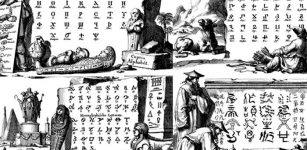 What Can Languages And Grammar Reveal About Our Ancient History?
Archaeology | Aug 20, 2021
What Can Languages And Grammar Reveal About Our Ancient History?
Archaeology | Aug 20, 2021 -
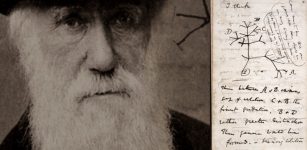 Who Has Stolen Charles Darwin’s Notebooks Worth Millions From The University Of Cambridge?
News | Nov 24, 2020
Who Has Stolen Charles Darwin’s Notebooks Worth Millions From The University Of Cambridge?
News | Nov 24, 2020 -
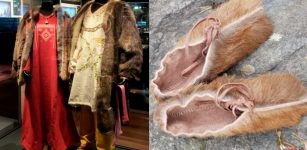 Impressive Textile Reconstruction Shows What Viking Age People Dressed Like
Featured Stories | Sep 26, 2023
Impressive Textile Reconstruction Shows What Viking Age People Dressed Like
Featured Stories | Sep 26, 2023 -
 Fossils In The ‘Cradle Of Humankind’ May Be More Than A Million Years Older Than Previously Thought
Archaeology | Jun 28, 2022
Fossils In The ‘Cradle Of Humankind’ May Be More Than A Million Years Older Than Previously Thought
Archaeology | Jun 28, 2022 -
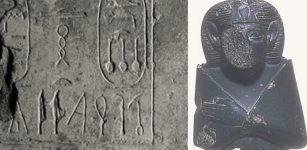 Sobekneferu: First Female Pharaoh In Ancient Egypt
Featured Stories | Mar 9, 2019
Sobekneferu: First Female Pharaoh In Ancient Egypt
Featured Stories | Mar 9, 2019 -
 How Did Vikings Celebrate Yule – The Winter Solstice?
Ancient Traditions And Customs | Dec 17, 2020
How Did Vikings Celebrate Yule – The Winter Solstice?
Ancient Traditions And Customs | Dec 17, 2020 -
 On This Day In History: American General Benedict Arnold Commits Treason – On Sep 21, 1780
News | Sep 21, 2015
On This Day In History: American General Benedict Arnold Commits Treason – On Sep 21, 1780
News | Sep 21, 2015 -
 On This Day In History: Treaty of Bergerac Ratified – On Sep 17, 1577
News | Sep 17, 2016
On This Day In History: Treaty of Bergerac Ratified – On Sep 17, 1577
News | Sep 17, 2016 -
 Evidence Of The 586 BCE Babylonian Destruction Of Jerusalem’s Monumental Building – Reconstructed
Archaeology | Jul 28, 2023
Evidence Of The 586 BCE Babylonian Destruction Of Jerusalem’s Monumental Building – Reconstructed
Archaeology | Jul 28, 2023 -
 Ancient Assyrian Tomb With 10 Skeletons And Ceramic Sarcophagi Unearthed In Iraq
Archaeology | Apr 10, 2017
Ancient Assyrian Tomb With 10 Skeletons And Ceramic Sarcophagi Unearthed In Iraq
Archaeology | Apr 10, 2017 -
 Ancient Biblical Manuscript M.910 We Are Afraid To Open May Contain A Surprise
Archaeology | Feb 19, 2018
Ancient Biblical Manuscript M.910 We Are Afraid To Open May Contain A Surprise
Archaeology | Feb 19, 2018 -
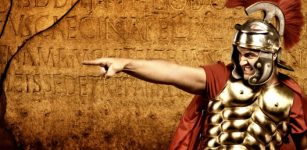 Meaning Of Ancient Hand Signs We Still Use Today
Ancient History Facts | Apr 22, 2021
Meaning Of Ancient Hand Signs We Still Use Today
Ancient History Facts | Apr 22, 2021 -
 Mystery Of Count St. Germain – He Claimed To Have Lived For Several Centuries
Featured Stories | Sep 4, 2014
Mystery Of Count St. Germain – He Claimed To Have Lived For Several Centuries
Featured Stories | Sep 4, 2014 -
 Ancient Andean People Had A Plant-Based Diet And Were Not Hunter-Gatherers
Archaeology | Jan 25, 2024
Ancient Andean People Had A Plant-Based Diet And Were Not Hunter-Gatherers
Archaeology | Jan 25, 2024 -
 Amanitore – Nubian Warrior Queen And Her Pyramids
Historical Figures | Aug 13, 2018
Amanitore – Nubian Warrior Queen And Her Pyramids
Historical Figures | Aug 13, 2018 -
 Why Did Students Turn Medieval Oxford Into A Murder Capital?
Places | Sep 28, 2023
Why Did Students Turn Medieval Oxford Into A Murder Capital?
Places | Sep 28, 2023 -
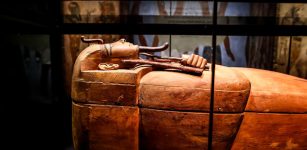 Pharaoh Ramses II’s Sarcophagus On Display For The First Time In 50 Years
Artifacts | Apr 11, 2023
Pharaoh Ramses II’s Sarcophagus On Display For The First Time In 50 Years
Artifacts | Apr 11, 2023

